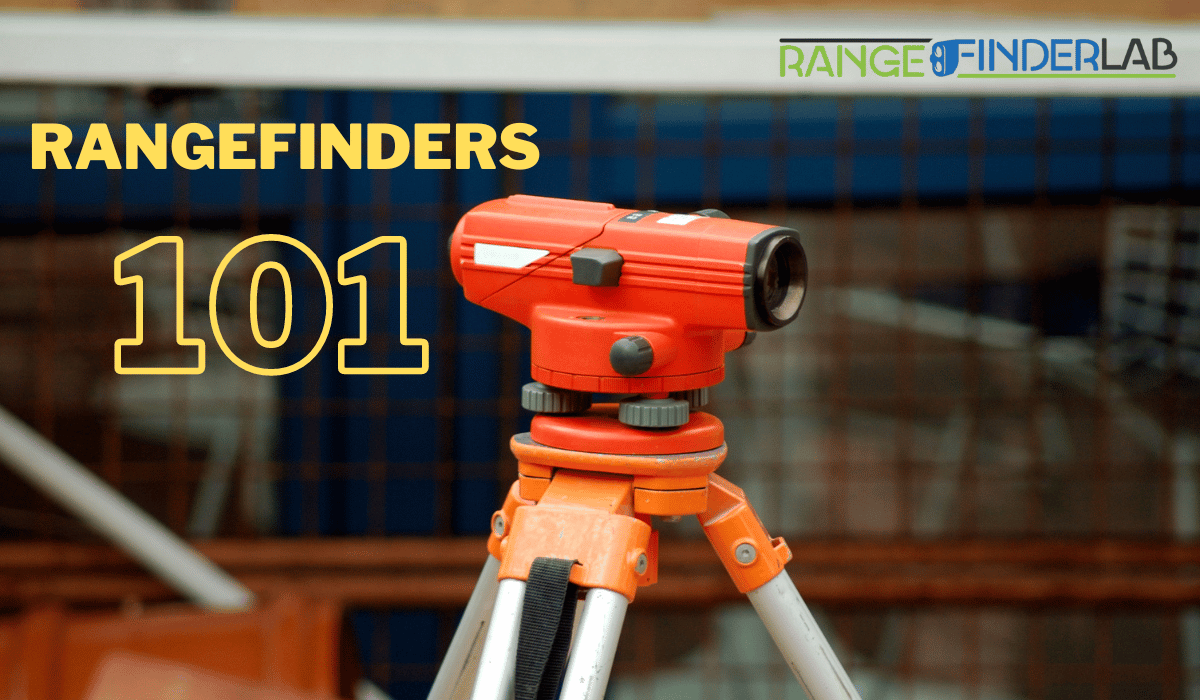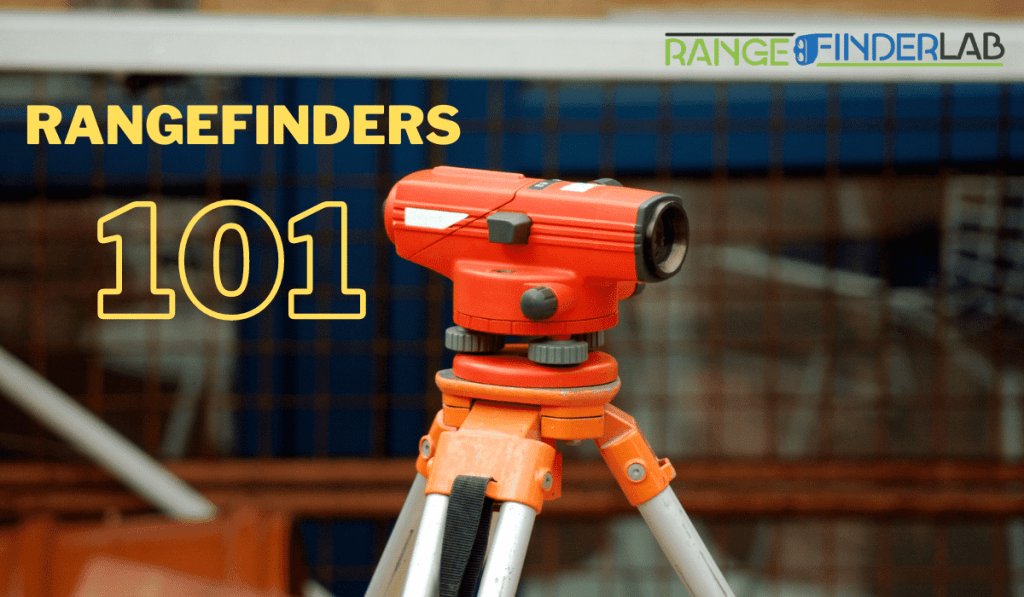

Rangefinders, sophisticated yet intuitive devices, have become indispensable in various activities like golfing, hunting, photography, and surveying. At their core, rangefinders are instruments designed to measure distance precisely and efficiently, revolutionizing how distances are gauged in professional and recreational contexts.
The essence of a rangefinder lies in its ability to provide accurate distance measurements, a function vital across numerous fields. In golf, rangefinders help players assess distances to holes or obstacles, enhancing strategy and improving gameplay. Hunters rely on them for accurate shots, ensuring ethical hunting practices. Photographers and filmmakers use rangefinders to achieve the perfect focus for their images, while surveyors and architects utilize them for precise measurements in planning and construction.
Table of contents
Overview of Rangefinders and Their Significance
The significance of rangefinders extends beyond mere distance measurement; they embody a fusion of technology and convenience, bringing efficiency and accuracy to tasks that once required complex calculations or guesswork. The evolution of rangefinders, from basic optical models to advanced laser variants, reflects a journey through innovation and technological advancement.
Introduction to the Basic Principles of Operation
Understanding the basic principles of operation of rangefinders is essential to appreciate their functionality. Optical rangefinders, the traditional type, operate on the principle of triangulation. They require the user to align two images visually, and the distance is calculated based on the convergence angle. This manual method, while less common now, laid the groundwork for distance measurement technology.
Laser rangefinders, a more modern variant, use a laser beam to measure distance. When the user targets an object, the device emits a laser pulse that travels to the object and reflects. The rangefinder then calculates the distance based on the time it took for the laser to return. This method offers remarkable accuracy and simplicity, making laser rangefinders popular in various applications.
As we delve further into the world of rangefinders, it becomes clear that these devices are more than just tools; they are testaments to human ingenuity in simplifying complex tasks. Whether for ensuring the perfect golf swing, capturing a stunning landscape, or mapping out a new building site, rangefinders have reshaped how we measure and interact with our surroundings.
The Mechanics of Optical Rangefinders
How Optical Rangefinders Work
Steeped in a rich history of mechanical ingenuity, optical rangefinders operate on the triangulation principle. This method involves measuring the angle of two sightlines to an object and using this information to calculate the distance based on geometric principles. The user looks through a viewfinder; typically, an optical mechanism superimposes two images of the target. By adjusting a dial, the user aligns these images, and the rangefinder calculates the distance based on the angle necessary to align them.
This mechanism relies on a simple yet effective concept. Inside the rangefinder, a set of mirrors or prisms reflects the images. When the images align perfectly, the angle between the sightlines to the target is measured, and using the known baseline distance between the mirrors or prisms, the distance to the object can be calculated using basic trigonometry.
Common Uses in Various Fields
- Military Applications: Historically, optical rangefinders were crucial in military operations, particularly in artillery targeting and naval engagements. They allowed for accurate distance measurements to enemy positions or ships, necessary for effective targeting.
- Surveying and Construction: Optical rangefinders assist in measuring distances between landmarks or in topographical mapping. They are valued for their simplicity and reliability in construction projects for quick distance assessments.
- Photography: Optical rangefinders help photographers determine the focus distance to their subjects in photography, particularly in film cameras. This ensures that photos are sharp and well-composed.
- Sports and Recreation: Optical rangefinders provide a traditional method for gauging distances to targets or holes in sports like golf or archery. They are appreciated for their straightforward, no-battery-required operation.
- Astronomy and Bird Watching: For amateur astronomers and bird watchers, optical rangefinders can aid in estimating distances to celestial objects or observing wildlife from a distance, respectively.
- Education and Training: They are used as teaching tools to demonstrate basic principles of optics and triangulation.
With their manual operation and historical significance, optical rangefinders continue to be used in various fields despite the advent of more advanced technologies. Their charm lies in their simplicity and tactile connection to distance measurement, reminiscent of a time when mechanical devices were a window to new possibilities.
Laser Rangefinders Unveiled
Operating Principles of Laser Rangefinders
Laser rangefinders represent a leap in technological advancement, offering precision and ease of use that have revolutionized how distances are measured. At their core, these devices operate based on the time-of-flight principle, utilizing the speed of light as a constant to calculate distances.
When a user targets an object and activates the rangefinder, it emits a laser beam toward the target. This beam travels to the object and is reflected in the rangefinder. The device then calculates the time taken for the laser to return. Since the speed of light is known (approximately 299,792 kilometers per second), the rangefinder can accurately calculate the distance by multiplying the time by the speed of light and dividing by two (to account for the round trip).
This method’s accuracy hinges on the speed and precision of the laser and the rangefinder’s electronic components. Modern laser rangefinders are equipped with highly sophisticated lasers and sensors that measure flight time with remarkable accuracy, providing extremely accurate distance measurements.
Advantages Of Optical Models
- Accuracy and Range: One of the most significant advantages of laser rangefinders is their superior accuracy and range. They can accurately measure much longer distances than optical models, often up to several kilometers, with a minimal margin of error.
- Ease of Use: Laser rangefinders offer a user-friendly experience. They typically involve simply pointing the device at a target and pressing a button, with the device quickly calculating and displaying the distance.
- Versatility and Adaptability: These rangefinders work well in various settings and lighting, from bright daylight to dimly lit environments. They are adaptable to different surfaces, including reflective and non-reflective targets.
- Speed of Measurement: Laser rangefinders provide instantaneous results, crucial when time is of the essence, such as in sports or tactical applications.
- Additional Features: Many laser rangefinders have extra features like angle compensation, ballistic calculators, and GPS functionality, adding value beyond essential distance measurement.
While optical rangefinders have charm and historical significance, laser rangefinders offer a modern, efficient, and highly accurate alternative. Their widespread use in fields such as golf, hunting, surveying, and even in military applications is a testament to their versatility and advantages over traditional optical models. As technology advances, laser rangefinders are poised to become even more sophisticated, further solidifying their place as indispensable tools in precision distance measurement.
Advanced Features in Modern Rangefinders
Technological Advancements in Rangefinders
The evolution of rangefinder technology has been marked by significant advancements, transforming these devices into multifunctional tools that offer much more than essential distance measurement. Modern rangefinders now boast various advanced features driven by the integration of digital technology and user-centric design.
- Ballistic Calculators: Particularly useful in hunting and shooting sports, these calculators consider factors like bullet drop, wind, and elevation changes to provide more accurate shooting solutions.
- Angle Compensation: This feature is crucial for activities like archery or mountainous terrain hunting, where the angle of the shot can significantly affect accuracy. Rangefinders with angle compensation automatically adjust the distance based on the angle of the shot.
- GPS Integration: Some rangefinders come equipped with GPS, enabling users to pinpoint their location and map out areas, which is especially useful in golfing and outdoor navigation.
- Bluetooth Connectivity and Mobile Apps: The ability to connect rangefinders to smartphones and other devices allows for the seamless transfer of data, tracking of shots, and even the capability to receive software updates.
- Customizable Display and Interface: Advanced rangefinders offer user-friendly interfaces and customizable displays, allowing users to tailor the device to their specific needs and preferences.
- Enhanced Optics and Image Stabilization: High-quality optics and image stabilization technologies provide more precise, more stable views, particularly in long-range observations.
Impact of These Features on User Experience
The impact of these technological advancements on the user experience is profound. For one, the added precision and functionality provided by features like ballistic calculators and angle compensation enhance performance in sports and hunting. Golfers, hunters, and outdoor enthusiasts can execute more informed and practical strategies, directly influencing their success and enjoyment.
GPS integration and connectivity features bring convenience and interactivity previously unattainable. Users can now easily navigate terrains, track progress, and share data, enriching their overall experience and engagement with their activities.
Modern rangefinders’ enhanced optics and user interfaces make them more accessible and enjoyable. More explicit images and easy-to-navigate menus ensure that users of all skill levels can operate these devices effectively, broadening their appeal and utility.
In essence, the advanced features in modern rangefinders have improved their functionality and transformed how users interact with these devices. They have elevated rangefinders from simple measurement tools to indispensable companions in various activities, enhancing accuracy, efficiency, and enjoyment in pursuits ranging from sports to professional applications.
Rangefinders in Specific Applications
Use of Rangefinders in Golfing, Hunting, and Other Activities
Rangefinders have found diverse applications across various fields, each tailored to enhance performance and experience in specific activities.
- Golfing: In golf, rangefinders measure the distance to the pin, hazards, or specific points on the course. They assist golfers in choosing the right club and planning their shots more effectively. Golf-specific rangefinders often come with slope calculation, accounting for elevation changes between the golfer and the target.
- Hunting: Hunters utilize rangefinders to gauge distances to game accurately. This information is crucial for making ethical and practical shots, especially in challenging terrains. Hunting rangefinders might include features like ballistic calculators, weather resistance, and camouflage designs for discreet use in the wild.
- Photography and Filmmaking: Rangefinders assist photographers and filmmakers in determining the precise focus distance, ensuring sharp and well-composed images. They are instrumental in manual focus cameras and in setting up complex shots.
- Surveying and Construction: In these fields, rangefinders provide quick and accurate measurements for land assessment, site planning, and architectural design. They often come with enhanced durability and extended range capabilities for outdoor use.
- Outdoor Recreation and Hiking: For outdoor enthusiasts and hikers, rangefinders help in navigating landscapes, measuring distances to landmarks, and planning routes.
Tailoring Rangefinder Technology to Specific Needs
The versatility of rangefinder technology allows it to be tailored to meet the specific needs of various applications:
- Customization for Accuracy and Range: Different activities require different levels of accuracy and range. For instance, a golfer might need a rangefinder with a shorter range but higher accuracy, while a surveyor might prioritize an extended range.
- Specialized Features: Features like slope calculation for golfers, ballistic data for hunters, and image stabilization for photographers are examples of how rangefinder technology is customized to enhance its application in specific fields.
- Design and Durability: The design of a rangefinder can be adapted to suit the environment in which it will be used. Rugged, weather-resistant designs are ideal for outdoor activities like hunting and hiking, while more compact and sleek designs might be preferred in golfing and photography.
- User Interface and Accessibility: The user interface can be tailored for simplicity or complexity, depending on the user’s expertise and requirements. Intuitive interfaces benefit casual users and hobbyists, while professionals might prefer more detailed and customizable settings.
In conclusion, rangefinders are not one-size-fits-all devices. Their technology is constantly being refined and adapted to suit the specific requirements of different activities. Whether for accuracy, functionality, or convenience, the ability to tailor rangefinders to various needs makes them valuable tools across multiple disciplines.
Expert Insight
Personal Experiences and Opinions on Rangefinder Technology
As an expert in rangefinder technology, my experience has led me to appreciate the nuanced advancements these devices have undergone and their profound impact on various fields. My journey with rangefinders started in the realm of golf, where the precision of a laser rangefinder transformed how I approached each shot. The immediate feedback on distance improved my game and deepened my understanding of the course.
Transitioning from golf to wildlife photography, I realized the versatility of rangefinders. A rangefinder became my trusted tool in the wild, helping me maintain safe distances while capturing stunning shots. The accuracy and reliability of these devices in diverse environments underscore their sophistication and adaptability.
Through these experiences, my admiration for rangefinder technology has only grown. The seamless blend of optical precision, electronic processing, and user-centric design in modern rangefinders is a testament to the relentless pursuit of technological advancement.
The Future of Rangefinders and Potential Advancements
Looking to the future, I envision rangefinders evolving in several key areas:
- Integration with Artificial Intelligence (AI): AI could enable rangefinders to automatically recognize and track targets, adjust settings for optimal accuracy, and even provide recommendations based on environmental conditions.
- Augmented Reality (AR) Features: Incorporating AR could provide users with an enhanced visual interface, displaying detailed information about the target or course overlaid on the real-world view.
- Improved Connectivity and Data Sharing: Future rangefinders might offer more advanced connectivity options, allowing for real-time data sharing and analysis. This could be particularly useful in collaborative settings like construction sites or team sports.
- Sustainable Designs: As environmental consciousness grows, rangefinders could adopt eco-friendly materials and energy-efficient components, aligning with the global push towards sustainability.
- Customization and Personalization: Advances in technology might allow for greater personalization in rangefinders, catering to the specific preferences and requirements of individual users or professions.
- Expansion in Applications: The potential applications of rangefinders are vast. We might see their increased use in autonomous vehicles, drone technology, and personal healthcare devices.
In summary, rangefinders, as they stand today, are the culmination of years of innovation, but they are not at their final frontier. The future promises even more sophisticated, user-friendly, and versatile rangefinders, continuing to transform activities ranging from leisure and sports to professional and scientific applications. The journey of rangefinder technology is exciting, and its future developments are sure to further embed these invaluable tools in our daily lives and work.
Maintenance and Care for Rangefinders
Proper maintenance and care are essential for ensuring rangefinders’ longevity and optimal performance. Here are some best practices and common troubleshooting tips.
Best Practices for Maintaining Rangefinders
- Regular Cleaning: Keep the lens and body of the rangefinder clean. Use a soft, lint-free cloth to wipe the lens gently. Avoid harsh cleaning agents that might damage the lens coatings.
- Proper Storage: Store your rangefinder in a protective case when not in use. This prevents dust accumulation and protects it from accidental drops or scratches.
- Avoid Extreme Temperatures: Exposing rangefinders to extreme temperatures can damage electronic components. Try to keep them in a moderate and stable environment.
- Battery Care: For rangefinders with replaceable batteries, ensure that the batteries are fresh and properly inserted. I follow the manufacturer’s charging guidelines for rechargeable models to prolong battery life.
- Check Alignment and Calibration: Periodically check the alignment and calibration of your rangefinder, especially if you notice any inconsistencies in measurement. Refer to the user manual for calibration procedures.
- Handle with Care: Although many rangefinders are built ruggedly, they are still precision instruments. Handle them carefully to avoid jarring or dropping, which can misalign optical components.
Common Troubleshooting Tips
- Inaccurate Readings: If your rangefinder gives inconsistent or inaccurate readings, ensure the lens is clean and check for any obstructions in the laser path. Recalibrate if necessary.
- Difficulty Locking onto a Target: This issue often occurs if the target is too small or non-reflective. Try aiming at a larger, more reflective surface or use a target card.
- Battery Issues: If the rangefinder does not power on, check the battery installation first. Replace the batteries if needed, or ensure the device is charged using a rechargeable model.
- Fogging or Condensation: Avoid rapid temperature changes to prevent condensation on the lens. If fogging occurs, allow the rangefinder to acclimatize to the ambient temperature before use.
- Display Problems: If the display is dim or unreadable, adjust the brightness settings (if available). Check battery power, as a low battery can sometimes cause display issues.
- Error Messages: Refer to the user manual for specific error messages. Often, turning off the device and restarting it can resolve temporary glitches.
Following these maintenance and care guidelines ensures that your rangefinder remains a reliable tool for your activities. Regular upkeep extends the life of your rangefinder and ensures it remains accurate and dependable whenever you need it.
Choosing the Right Rangefinder
Selecting the right rangefinder can significantly enhance your experience in various activities, whether for golfing, hunting, surveying, or photography. Here are vital factors to consider and tips for making an informed decision.
Factors to Consider When Purchasing a Rangefinder
- Purpose and Application: Determine the primary use of the rangefinder. Different activities require specific features; for instance, a golfer might need slope compensation, while a hunter might prioritize ballistic data and weather resistance.
- Range and Accuracy: Evaluate the maximum distance you’ll need to measure and the level of accuracy required. Longer ranges and higher accuracy typically come with a higher price tag.
- Optical Quality and Magnification: Good optical quality ensures clear, bright images. Consider the level of magnification needed for your activities – higher magnification can be beneficial but may also amplify hand movements.
- Size, Weight, and Ergonomics: The rangefinder should be comfortable to hold and use, mainly if carried for extended periods. Compact and lightweight models are often preferred for ease of transport and use.
- Durability and Weather Resistance: If you use the rangefinder outdoors, look for durable construction and weather-resistant features to withstand various environmental conditions.
- Battery Life: Consider the battery life and type used (rechargeable vs. replaceable). Longer battery life is convenient, especially when charging or battery replacement isn’t feasible.
- Additional Features: GPS, Bluetooth connectivity, angle compensation, and custom ballistic profiles can be valuable depending on your specific needs.
- Budget: Set a budget that reflects the importance of the rangefinder in your activities. While higher-priced models offer more features and better performance, quality options are also available at more affordable prices.
Tips for Making an Informed Decision
- Read Reviews and User Feedback: Check online reviews and forums to understand the pros and cons of different models from actual users’ perspectives.
- Test Before Buying: If possible, test different rangefinders to get a feel for their usability, clarity, and response time.
- Research Brands and Warranties: Look into different brands and their reputations. Consider the warranty and customer service, as these can be crucial in case of any issues with the device.
- Consult with Experts or Experienced Users: Seeking advice from experienced users or experts in your activity area can provide valuable insights into choosing the right rangefinder.
- Consider Future Needs: Consider how your needs might evolve and whether the rangefinder will still be suitable in the long term.
By carefully considering these factors and tips, you can choose a rangefinder that meets your current needs and serves you well into the future. Remember, the right rangefinder can be a game-changer in your activities, providing accuracy, efficiency, and enjoyment.
Frequently Asked Questions (FAQ)
Q1: How accurate are laser rangefinders?
Laser rangefinders are known for their high accuracy. Most models offer precision within a margin of a few meters, even over long distances. The accuracy can vary slightly based on factors like target reflectivity and environmental conditions.
Q2: Can rangefinders be used in all weather conditions?
While rangefinders can function in various weather conditions, their performance may be impacted. For instance, heavy rain or fog can interfere with the laser’s ability to accurately measure distances in laser rangefinders. Optical rangefinders are less affected by weather but require good visibility for accurate readings.
Q3: Are there legal restrictions on using rangefinders in sports?
In some sports, like golf, the use of rangefinders was traditionally restricted. However, many golfing bodies have relaxed these rules, and rangefinders are now widely used. It’s always best to check the specific regulations of the sport or event you’re participating in.
Q4: How do I maintain my rangefinder?
To maintain your rangefinder, keep it clean, especially the lens, using a soft cloth. Store it in a protective case when not in use, avoid exposing it to extreme temperatures or moisture, and ensure the batteries are regularly checked and replaced if necessary.
Q5: What should I consider when buying a rangefinder for golf?
When buying a rangefinder for golf, consider features like slope adjustment, which accounts for elevation changes on the course, and vibration or pin-seeking technology, which helps in accurately locating the flagstick. Also, consider the rangefinder’s weight, size, and ease of use.
Q6: Are rangefinders difficult to use?
Most modern rangefinders are designed for ease of use. Laser rangefinders typically involve just pointing at a target and pressing a button. Optical rangefinders may require some practice to align images accurately but are generally straightforward.
Q7: Can rangefinders be used for both outdoor and indoor applications?
Laser rangefinders are versatile and can be used for both outdoor and indoor applications. However, their effectiveness indoors might be limited based on the range and the reflective properties of indoor surfaces.
Q8: Is there a significant difference between cheap and expensive rangefinders?
The price difference often reflects the rangefinder’s range, accuracy, build quality, and additional features. Expensive models tend to offer better precision, longer range, durability, and advanced features like slope calculation, ballistic data, and GPS integration.
Conclusion
Recap of Key Points
Rangefinders, sophisticated yet user-friendly devices, have evolved significantly, becoming essential tools in various fields such as golfing, hunting, surveying, and photography. We’ve explored the intricacies of optical and laser rangefinders, each with its unique operating principles and suited to different applications. Based on triangulation, optical rangefinders offer simplicity and a historical charm, while laser rangefinders provide unparalleled accuracy and ease of use thanks to their time-of-flight measuring principle.
Technological advancements have further enhanced rangefinders with features like ballistic calculators, angle compensation, GPS integration, and improved optics, tailoring them to specific needs and enhancing user experience. These advancements underscore the importance of choosing the right rangefinder, which hinges on factors like purpose, range, accuracy, and additional features.
Final Thoughts on the Importance of Understanding Rangefinder Technology
Understanding rangefinder technology is more than just knowing how to measure distances; it’s about appreciating how these devices can significantly improve accuracy, efficiency, and enjoyment in various activities. For golfers, hunters, surveyors, and photographers, a rangefinder is a tool and a companion that brings precision and confidence to their pursuits.
The future of rangefinder technology, likely to be shaped by further innovations like AI integration and enhanced connectivity, promises even greater capabilities. This evolution will continue to open new possibilities and applications, making rangefinders an even more integral part of professional and recreational activities.
In conclusion, whether you’re a professional looking for precision in your work or an enthusiast seeking to enhance your hobby, understanding and choosing the right rangefinder can make a significant difference. As we embrace these technological advancements, rangefinders stand out as exemplary tools that blend innovation with practicality, bringing the world into more precise focus.








